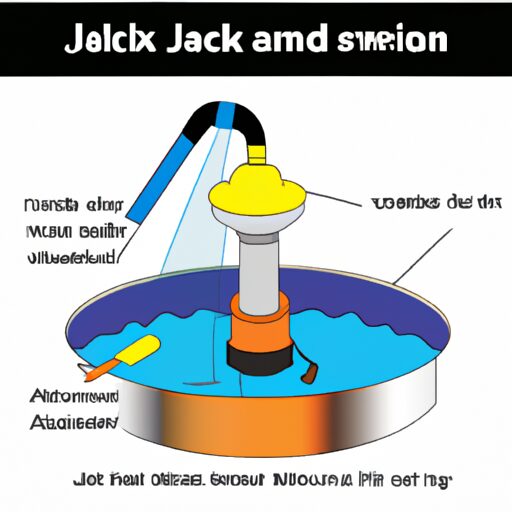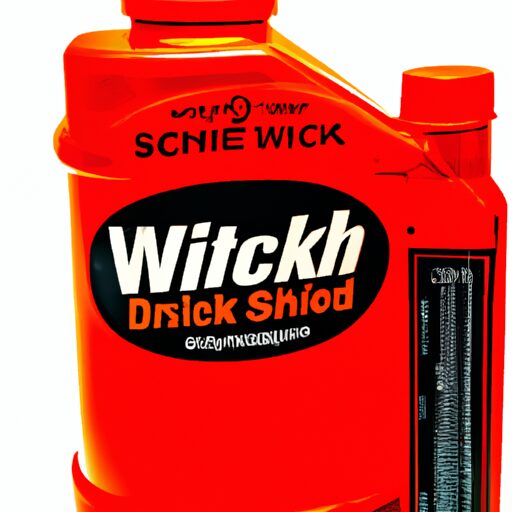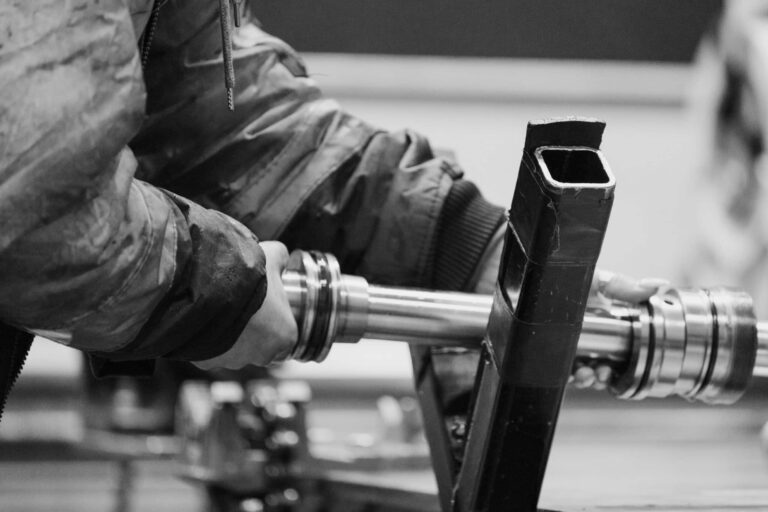How To Put Hydraulic Fluid In A Jack
This article provides a step-by-step guide on how to put hydraulic fluid in a jack. Hydraulic jacks are commonly used for lifting heavy objects, and ensuring that the jack is properly lubricated with hydraulic fluid is essential for its efficient functioning. The objective of this article is to provide detailed instructions, using an academic style of writing that is impersonal and eliminates personal pronouns.
To illustrate the process, let us consider a hypothetical scenario where an individual needs to lift a car for maintenance purposes. In this case, it is necessary to understand the correct procedure for adding hydraulic fluid to the jack’s reservoir in order to ensure safe and effective lifting.
By following the precise directions outlined in this article, readers will gain a comprehensive understanding of how to locate the hydraulic fluid reservoir, clean it properly, remove the fill plug or cap, pour the hydraulic fluid slowly into the reservoir, securely replace the fill plug or cap, and test the jack’s function and fluid level. This technical approach aims to cater to an audience seeking clear comprehension of this particular task.
Gather the necessary tools and materials
One important step in the process of putting hydraulic fluid in a jack is to gather the necessary tools and materials. Proper jack maintenance requires the use of specific equipment and fluids to ensure optimal performance. To begin, you will need a funnel that fits securely into the reservoir opening of your jack. This will help prevent any spills or leaks during the filling process. Additionally, it is crucial to select the appropriate type of hydraulic fluid for your jack. There are different types available, such as mineral oil-based fluids or synthetic fluids, each with their own advantages and disadvantages. Consider consulting your jack’s manual or manufacturer guidelines to determine which type is recommended for your specific model.
By gathering these essential tools and materials beforehand, you can effectively proceed with refilling the hydraulic fluid in your jack without any interruptions or delays. Once you have acquired all the necessary items, you can move on to locating the hydraulic fluid reservoir on your jack and proceeding with the subsequent steps in this process.
Locate the hydraulic fluid reservoir on your jack
To successfully maintain your jack’s optimal performance, it is crucial to identify the specific location of the reservoir containing the essential liquid that allows for smooth hydraulic operation. The hydraulic fluid reservoir is typically located on the side or bottom of the jack. Before proceeding with any maintenance, it is important to check for any leaks around the reservoir area. Leaks can indicate a problem with the seals or fittings and should be addressed before adding hydraulic fluid.
Once you have ensured there are no leaks, you can proceed to check the hydraulic fluid level. Locate the filler plug on top of the reservoir and remove it using a suitable tool such as a wrench or socket set. Carefully inspect both the filler plug and its threads for any damage or wear.
With the filler plug removed, visually inspect the hydraulic fluid level inside the reservoir. The fluid should reach just below or up to the maximum fill line indicated on either side of the reservoir walls. If necessary, add more hydraulic fluid until it reaches this optimal level.
Having checked for leaks and confirmed proper fluid levels in your jack’s reservoir, you can now transition into cleaning both the reservoir and its surrounding area without delay.
Clean the reservoir and surrounding area
The cleanliness of the reservoir and its surrounding area is crucial for maintaining the optimal performance and longevity of your equipment. It is important to regularly clean the hydraulic fluid reservoir on your jack to ensure that it remains free from dirt, debris, and other contaminants. By doing so, you will prevent these particles from entering the hydraulic system, which could result in damage or decreased efficiency.
To clean the reservoir and its surrounding area effectively, there are several techniques you can employ. Firstly, use a clean cloth or rag to wipe away any visible dirt or grime from the exterior surfaces. Next, inspect the fill plug or cap for any signs of contamination and remove them if necessary. Additionally, consider using compressed air to blow away any stubborn debris that may have accumulated in hard-to-reach areas.
Maintaining proper hydraulic fluid levels is also crucial for the overall functionality of your jack. Regularly checking and replenishing hydraulic fluid ensures smooth operation and prevents premature wear and tear on internal components. Be sure to consult your jack’s user manual for specific instructions on how to check and add hydraulic fluid.
With the reservoir cleaned thoroughly, we can now proceed to remove the fill plug or cap in order to access it easily during our next step.
Remove the fill plug or cap
Removing the fill plug or cap allows for easy access to the reservoir during the next step of the process. To ensure proper maintenance of hydraulic jacks, it is essential to follow a series of steps diligently. Firstly, check if the jack has any leaks or damaged components. This will prevent any potential accidents and ensure smooth functioning. Secondly, clean the hydraulic jack thoroughly to remove any dirt or debris that may have accumulated over time. Lastly, lubricate all moving parts with an appropriate lubricant to enhance their performance and increase their lifespan.
Discussion Idea 1: Proper maintenance of hydraulic jacks
Proper maintenance plays a crucial role in extending the lifespan of hydraulic jacks. Regularly inspecting for leaks and damages can help identify potential issues before they worsen. Additionally, cleaning the jack ensures that dirt and debris do not interfere with its operation.
Discussion Idea 2: Common problems and troubleshooting for hydraulic jacks
Common problems encountered with hydraulic jacks include leaks, insufficient lifting capacity, and slow operation. If a leak is detected, it is important to identify its source promptly and fix it accordingly. In cases where the lifting capacity seems inadequate, checking for air bubbles in the system or adjusting the pressure might be necessary.
To proceed further in this process, slowly pour the hydraulic fluid into the reservoir without overfilling it.
Slowly pour the hydraulic fluid into the reservoir
Slowly filling the reservoir with the necessary lubricant ensures smooth operation and prevents any potential damage to the hydraulic system. Before pouring the hydraulic fluid into the reservoir, it is essential to take certain precautions and handle it properly. This will ensure that the process is carried out safely and effectively.
To begin, make sure you have selected the appropriate type of hydraulic fluid for your jack. Different jacks may require different types of fluids, so refer to your user manual or consult a professional if you are unsure.
Once you have obtained the correct fluid, slowly pour it into the reservoir using a funnel. It is important to pour it in slowly to prevent overflow or spillage. Be careful not to introduce any contaminants into the system as this can lead to malfunctioning.
To help illustrate these precautions visually, refer to the table below:
| Precautions | Proper Handling |
|---|---|
| Use appropriate type of hydraulic fluid | Pour slowly into reservoir |
| Check user manual or consult professional if unsure | Avoid introducing contaminants |
By following these guidelines, you can ensure that your jack is filled correctly without causing any damage or issues. Once you have completed this step, move on to securely replacing the fill plug or cap.
Transition: With the reservoir now filled with hydraulic fluid, it is important to proceed by replacing the fill plug or cap securely…
Replace the fill plug or cap securely
Securely fasten the fill plug or cap to ensure a tight seal and prevent any potential leakage or loss of hydraulic fluid. This step is crucial for maintaining the proper functioning of the jack and avoiding potential safety hazards. By securely tightening the fill plug or cap, you can effectively contain the hydraulic fluid within the reservoir, preventing it from seeping out during operation.
To further emphasize the importance of this step, consider the following four key reasons for securely fastening the fill plug or cap:
- Preventing contamination: A secure seal prevents dirt, debris, and moisture from entering the reservoir and contaminating the hydraulic fluid.
- Maintaining optimal pressure: Proper sealing ensures that no air gets into the system, which could lead to reduced performance or malfunction.
- Avoiding fluid loss: A tightly secured fill plug or cap prevents any accidental spills or leaks that may result in a loss of hydraulic fluid.
- Enhancing overall safety: Securely fastening the fill plug or cap helps eliminate potential hazards associated with hydraulic fluid leaks, such as slippery surfaces and fire risks.
With these considerations in mind, securely tighten the fill plug or cap to guarantee an effective seal against potential leaks. Following this step will pave the way for testing your jack’s functionality and verifying its fluid level without any compromise in performance.
Test the jack to ensure proper function and fluid level
To validate the accuracy of a hypothesis, it is imperative to conduct a thorough examination of the jack’s functionality and verify its fluid level. Testing procedures are crucial in determining whether the hydraulic jack is functioning properly and ensuring that the correct amount of hydraulic fluid has been added.
Firstly, it is important to visually inspect the jack for any leaks or damage before testing. Then, raise and lower the jack several times to check for smooth operation and stability. Pay attention to any abnormal noises or vibrations during this process.
In addition, troubleshooting tips can help identify potential issues. If the jack fails to lift or hold weight, check for air bubbles in the hydraulic fluid by pumping the handle with no load on the saddle. If bubbles are present, bleed out excess air by releasing pressure through the release valve.
Furthermore, if there is excessive leakage of hydraulic fluid during operation, inspect all seals and connections for possible damage or wear. Tighten loose fittings as necessary.
Lastly, after completing these testing procedures and troubleshooting steps, recheck the fluid level in accordance with manufacturer guidelines. This ensures that proper function and adequate hydraulic fluid levels have been achieved before using the jack for lifting purposes.
Frequently Asked Questions
What are the potential consequences of using the wrong type of hydraulic fluid in a jack?
Using the wrong type of hydraulic fluid in a jack can lead to potential risks and consequences. These include reduced performance, damage to seals and internal components, increased wear and tear, and even complete failure of the jack system.
How often should the hydraulic fluid in a jack be replaced?
Regular maintenance of the hydraulic system in a jack is vital for its optimal functioning. To ensure longevity and prevent issues, it is recommended to replace the hydraulic fluid periodically and troubleshoot common problems that may arise.
Can I use any type of hydraulic fluid in my jack, or are there specific recommendations?
When it comes to hydraulic fluid compatibility in jacks, it is important to follow the manufacturer’s recommendations. Using the best hydraulic fluid for jacks ensures optimal performance and prevents damage to the system.
Is it necessary to bleed the hydraulic system after adding new fluid to the jack?
The bleeding procedure is crucial after adding hydraulic fluid to a jack. Just as air bubbles in a bloodstream can be fatal, trapped air in the system reduces performance and can cause failure. Properly bleeding ensures optimal function and safety.
How can I check the fluid level in my jack without removing the fill plug or cap?
To check the fluid level in a hydraulic jack without removing the fill plug or cap, you can use a dipstick or a sight glass. These maintenance tips ensure proper functioning and prevent damage to the jack during operation.
Conclusion
In conclusion, the process of putting hydraulic fluid in a jack requires careful attention to detail and precision. By following the steps outlined above, you can ensure that your jack is properly filled with hydraulic fluid for optimal performance. Remember to gather the necessary tools and materials, locate the hydraulic fluid reservoir, clean the area, remove and replace the fill plug or cap securely, and test the jack for proper function and fluid level. By adhering to these instructions, you will be able to maintain your jack’s functionality and prolong its lifespan.







